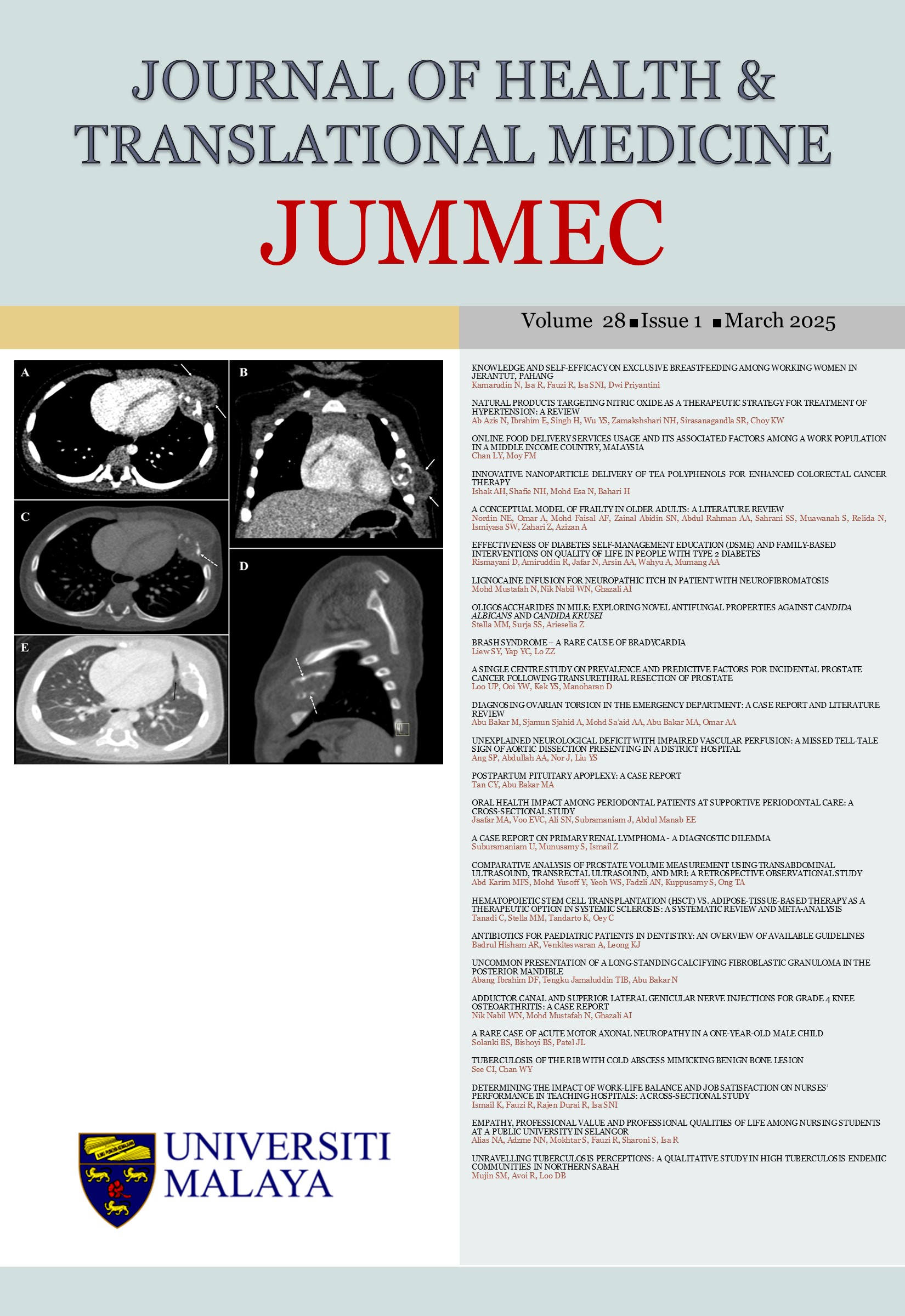A SINGLE CENTRE STUDY ON PREVALENCE AND PREDICTIVE FACTORS FOR INCIDENTAL PROSTATE CANCER FOLLOWING TRANSURETHRAL RESECTION OF PROSTATE
Received 2024-12-21; Accepted 2024-06-28; Published 2025-01-02
DOI:
https://doi.org/10.22452/jummec.vol28no1.10Abstract
Background: Many prostate cancers remain undiagnosed until benign prostatic hyperplasia (BPH) surgeries are performed. Transurethral resection of the prostate (TURP) renders subsequent radical prostatectomy technically challenging. Therefore, it is advantageous to identify high-risk patients and consider further investigations prior to BPH surgery.
Objectives: This study aims to report the prevalence of incidental prostate cancer (IPC) following TURP at Penang General Hospital and to develop predictive factors for IPC.
Methods: This retrospective observational study reviewed patients who underwent TURP for presumed BPH over the past five years. Clinicopathological variables studied included patient age, serum prostate-specific antigen (PSA) level, prostate volume, PSA density, resected prostatic tissue weight, and histopathological assessment of the resected specimen.
Results: A total of 220 patients underwent TURP for presumed BPH from April 2018 to April 2023. Thirteen patients (5.9%) had IPC, including seven patients with T1a disease and six patients with T1b disease. The most common cancer detected was ISUP grade group 1 (n = 6), followed by grade groups 2 (n = 4), 3 (n = 2), and 4 (n = 1). Stepwise binary logistic regression analysis revealed that a PSA density of >0.15 ng/ml² (p = 0.001) and low resected prostatic tissue weight (p = 0.024) correlated with an increased prevalence of IPC, with odds ratios of 26.1 and 0.9, respectively.
Conclusions: The prevalence of IPC at Penang General Hospital is 5.9%. A PSA density of >0.15 ng/ml² and low resected prostate volume are associated with a higher risk of IPC following TURP. Patients at risk should be offered further investigations, such as mpMRI of the prostate and/or repeat prostatic needle biopsy prior to BPH surgeries. Additionally, pathologists should consider examining the specimens of at-risk patients in their entirety rather than using standard handling procedures.
Downloads
Downloads
Published
Issue
Section
License
All authors agree that the article, if editorially accepted for publication, shall be licensed under the Creative Commons Attribution License 4.0 to allow others to freely access, copy and use research provided the author is correctly attributed, unless otherwise stated. All articles are available online without charge or other barriers to access. However, anyone wishing to reproduce large quantities of an article (250+) should inform the publisher. Any opinion expressed in the articles are those of the authors and do not reflect that of the University of Malaya, 50603 Kuala Lumpur, Malaysia.


